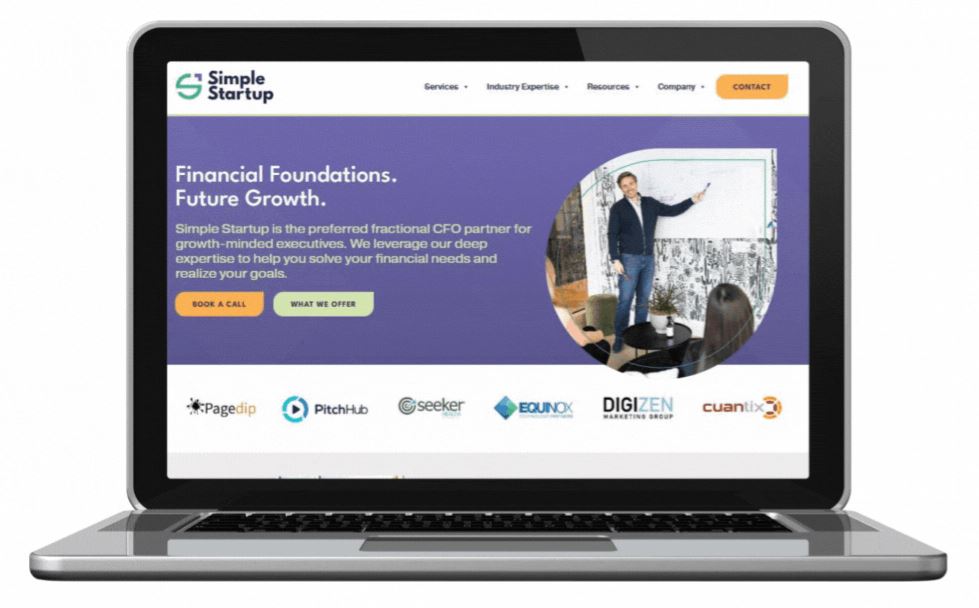Keep it Simple
Business owners have a tendency to quickly get caught up in the minutiae of running their business leading them to overcomplicate things like their strategy for business growth. We include ourselves in this group of business owners who have lost sight of the bigger picture at one point or another – it truly happens to the best of us!
So when you’re feeling overwhelmed and knee-deep in a convoluted strategy to achieve your growth goals, take a deep breath and a step back, because growth can be boiled down to three simple tactics. I know this sounds too good to be true, but it’s not. Let me introduce you to the great business philosopher, Jay Abraham.
The Aristotle of the Business World
Maybe you’ve already heard of Jay Abraham? In which case we’re happy to reintroduce you to him and point you to Jay Abraham’s business philosophy. But first, let’s paint a quick picture for you. If you’re a startup or an early-stage business you’re already working to beat the odds, so identifying ways to make your business sustainable is step one in amping up your business survival rate. Step two is developing a SIMPLE growth strategy. This is where Jay Abraham comes into the picture.
Without a firm plan to grow your business (i.e. revenue growth) and, you’re simply keeping up with the status quo, and in the dog eat dog world of startups vying for consumers and traction that is not enough. Jay Abraham explains that there are only three ways to grow any business (really, it’s true!). Though these strategies may differ in their implementation from company to company there truly is only three and they include:
- Increasing your number of clients
- Increasing the transaction value of your clients
- Increasing the purchase frequency for each client
Rolling in Clients
The first lever of revenue growth is increasing your number of clients. Finding new customers can sometimes be easier said than done. If every business owner had their druthers then their sales and marketing budgets would seem to last forever and attracting new customers to their business would be simple. But if anything 2020 proved we don’t live in an ideal world, thus we will have to come to terms with the true reach of our budgets.
than done. If every business owner had their druthers then their sales and marketing budgets would seem to last forever and attracting new customers to their business would be simple. But if anything 2020 proved we don’t live in an ideal world, thus we will have to come to terms with the true reach of our budgets.
So we know investing in sales and marketing is the way to eventually build a high-performing engine that can turn the leads marketing generates into closed sales, but there has to be some real meat behind these endeavors. And by that we mean, you have to understand your market and offer a top-notch service. So your first action items to generating new clients are:
- Understand your target audience. What are their pain points? What are they looking for in a service or product? What is your value proposition and what is your competition offering? Increasing your customers is about deeply understanding their needs.
- Who are your current customers? Where are they coming from and what are their demographics? Knowing what has drawn customers to you in the past will help you unearth yet-to-be-tapped sources and maximize current sources of customers.
- Define the market for your product. Most businesses have different customer segments, and each of these segments will be drawn in by unique key messaging and benefits. How can you help these customers understand why they need your business to solve their pain points?
With this deeper understanding of your target customers, you will have an easier time figuring out how to reach them through various sales and marketing channels. Let’s take a look at some of the traditional tactics to finding new customers.
- Cold outreach (Calls, emails, social, mail)
- Networking (Lead groups, chambers of commerce, industry associations)
- Word of mouth (Ask for referrals and wow your customers)
- Affiliate marketing (Influencers and parallel industries)
- Leveraging your website (Boost your organic traffic with SEO)
- Advertising (Google, Bing, LinkedIn, Facebook, etc.)
Depending on what you unearth about your target market, this will inform the best place to reach future customers. For example, if you sell women’s tie-dye sweatsuits, then you will likely choose to advertise on Facebook or Instagram over LinkedIn.
Retention Matters
The above tactics will help you target the right customers with the right message, but this can only go so far in your strategy for increasing customers if you don’t consider retention. Keeping customers in the long term is just as important (arguably more important) as gaining new customers. If you haven’t looked at your churn rate recently and you’re having trouble meeting your topline revenue growth goals, we think you’ll find addressing this will make a big difference in achieving your growth goals. How can you make your service, product, or customer experience so irresistible, so winningest, that customers want to stay with your company forever?
Always Be Selling
Jay’s second lever of business growth is increasing your transaction value per customer. Essentially you can reach your topline revenue growth goals faster and with fewer clients if you’re able to increase the value of each client. Perhaps the easiest way to accomplish this task would be to increase your prices. But while this approach would yield pretty immediate results, it may not be the best tactic to retain customers or compete against your industry’s competitors.
Tiered Pricing
One way to accomplish these price increases with a bigger nod to the sensitivity of your customers and your overall market is to take a tiered approach to pricing and to eliminate unneeded price tiers that don’t directly correlate to value for the client. This allows you to offer clear value to your clients while nudging them towards higher-value products when they need additional features.
Create Opportunities for Enhanced Service
Another tactic to increase transaction value and hence revenue growth is to make sure you build opportunities to provide additional value and enhanced service to your clients within your business model. For example, Simple Startup has three service pillars, accounting, finance, and tax, all of which are very complementary to each other which creates valuable opportunities to offer enhanced service to our clients.
For example, a client that has an accounting subscription is very likely to need a tax accountant to complete their business tax return – thus an opportunity to extend the value of our services has arisen. You may find that within your own business, you can offer valuable complementary services that will enhance the service your clients already receive, while also making an additional sale simply make sense. Think of it like selling peanut butter to your jelly customer, it just makes sense, right?
Bigger Products
Do you have a Costco membership? If so, then you’ve probably seen this third tactic for revenue growth in action. If you package more products into one single purchase, it’s easier for customers to buy more of them and thus spend more money with your business while getting some added bang for their buck in the form of a bulk purchase discount. Another good example of this is how beer comes in 6-packs, 12-packs, a case, and even a keg. This packaging makes it simpler for a customer to stock up on a product they know they will use in the future while at the same time offering some added value for their bulk purchase.
There are quite a few tactics to increase the transaction value of each customer, and you will have to find the right one for your business and industry, but these three tactics are a great way to get a better idea of how to impact this second lever of revenue growth.
The S’Mores Tactic
The third and final lever Jay Abraham outlines in his business philosophy is increasing the purchase or frequency of your customers. Your customers are already familiar with your business and your brand, so this can be a low barrier to entry method of increasing your revenue.
What’s New?
Developing new products is a great way to increase customer purchase frequency. And I would bet you’ve fallen for this tactic at some point too. A really good example of this would be Starbucks’ seasonal products. Every year, they come out with new seasonal coffee flavors and since they’ve been able to create such a well-loved brand, their customers have no problem coming in to buy these new products from them. I mean have you tried their latest, the Honey Almond Milk Flat White yet (it’s already on my list!)?
at some point too. A really good example of this would be Starbucks’ seasonal products. Every year, they come out with new seasonal coffee flavors and since they’ve been able to create such a well-loved brand, their customers have no problem coming in to buy these new products from them. I mean have you tried their latest, the Honey Almond Milk Flat White yet (it’s already on my list!)?
Make it Too Easy
Even simpler than creating a new product or service to sell, is to make it extraordinarily easy for your customers to purchase and re-purchase products from your business. There are so many ways to do this, but this can be as simple as email reminders to customers for a product they haven’t purchased in a while with a link to the product. A really great example of making it easy to amp up purchase frequency is the Amazon subscription method. Amazon Prime customers are able to add products they know they will use each month to a subscription so they don’t even have to think about repurchasing the product, it just shows up in a brown box on their doorstep.
Hey, Business Owners!
HEY! Do I have your attention? It’s time to take this conversation full circle. There’s absolutely no need to overcomplicate your growth strategies. If you’ve read this article, then you know there are only three ways to achieve your revenue growth goals and they are, say them with me,
- increase your number of clients,
- increase the per client transaction value, and
- increase the purchase frequency.
Of course, there are a number of methods to pulling these three levers in your business, and that is what we’re here for.
We want to help ensure you understand your numbers so you can make great financial decisions to help your business grow. If you need help simplifying your business model so you can grow exponentially, reach out to us! It’s literally in our name, Simple Startup, this is what we do.





